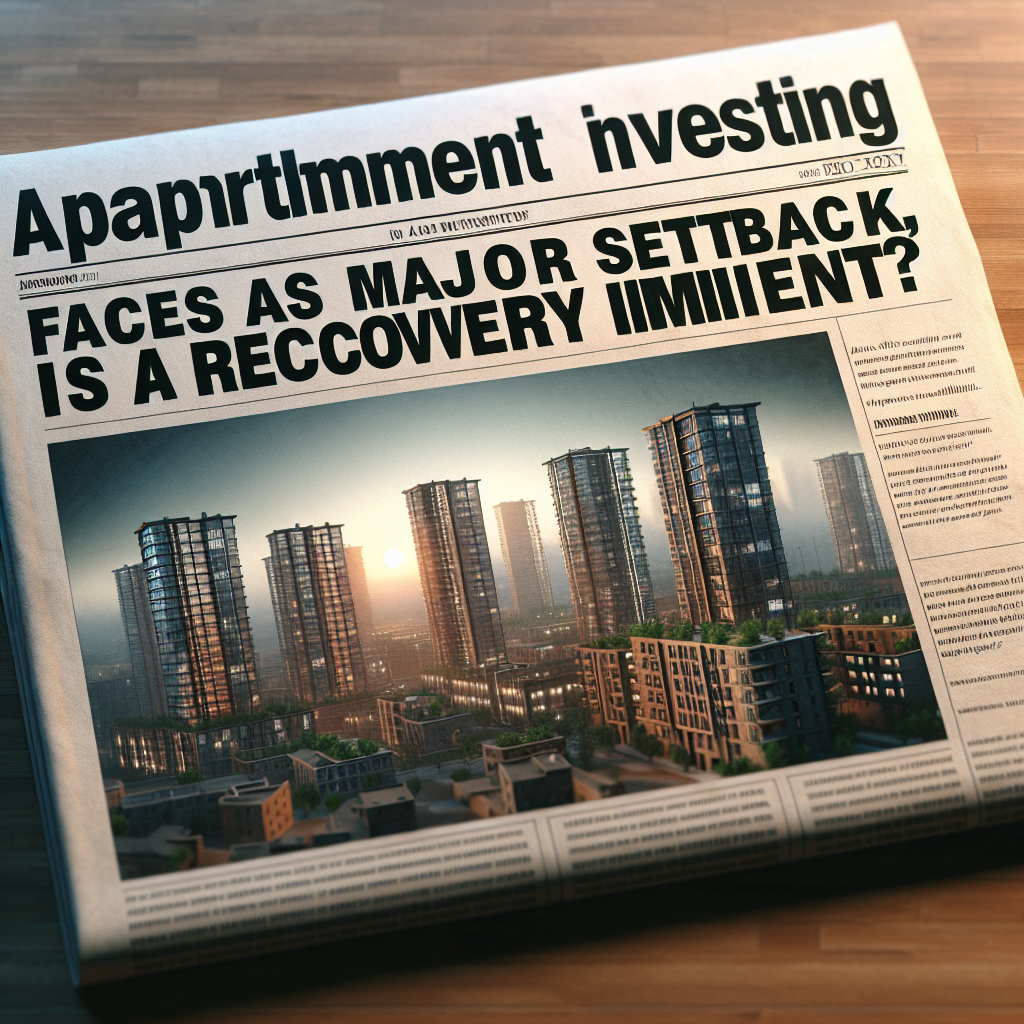-
Table of Contents
- BiggerNews: Apartment Investing Faces Major Setback, Is a Recovery Imminent?
- The Current State of Apartment Investing
- Economic Downturn
- Regulatory Changes
- Shifts in Tenant Preferences
- Case Studies: Real-World Impact
- Case Study 1: New York City
- Case Study 2: San Francisco
- Case Study 3: Berlin
- Is a Recovery Imminent?
- Economic Recovery
- Government Support
- Adaptation to New Trends
- Strategies for Navigating the Setback
- Conclusion
BiggerNews: Apartment Investing Faces Major Setback, Is a Recovery Imminent?

Apartment investing has long been considered a stable and lucrative venture for real estate investors. However, recent developments have caused significant disruptions in this market. From economic downturns to regulatory changes, the apartment investing landscape is facing unprecedented challenges. This article delves into the factors contributing to the current setbacks and explores whether a recovery is on the horizon.
The Current State of Apartment Investing
The apartment investing sector has been hit hard by a combination of economic, social, and regulatory factors. Understanding these elements is crucial for investors looking to navigate this turbulent period.
Economic Downturn
The global economic downturn, exacerbated by the COVID-19 pandemic, has had a profound impact on the real estate market. High unemployment rates and reduced income levels have led to a decrease in rental demand. According to a report by the National Multifamily Housing Council (NMHC), rent collections have dropped by 10% compared to pre-pandemic levels.
Regulatory Changes
Governments worldwide have implemented various measures to protect tenants during these challenging times. While these regulations aim to provide relief to renters, they have also placed significant financial strain on landlords and investors. Key regulatory changes include:
- Eviction Moratoriums: Many regions have imposed eviction bans, preventing landlords from evicting tenants who are unable to pay rent.
- Rent Control: Some cities have introduced or expanded rent control measures, limiting the amount landlords can charge for rent increases.
- Tenant Protection Laws: Enhanced tenant protection laws have increased the legal and financial responsibilities of landlords.
Shifts in Tenant Preferences
The pandemic has also altered tenant preferences, with many individuals seeking more spacious living arrangements or relocating to suburban areas. This shift has led to increased vacancy rates in urban apartment complexes. A study by Zillow found that urban rental vacancies increased by 5% in 2020, while suburban vacancies remained relatively stable.
Case Studies: Real-World Impact
To better understand the real-world impact of these challenges, let’s examine a few case studies of apartment investing setbacks.
Case Study 1: New York City
New York City, one of the most iconic real estate markets globally, has experienced a significant downturn in apartment investing. The combination of high COVID-19 infection rates, strict lockdown measures, and a mass exodus of residents has led to a sharp decline in rental demand. According to a report by StreetEasy, the median rent in Manhattan dropped by 15% in 2020, marking the largest annual decline in over a decade.
Case Study 2: San Francisco
San Francisco, known for its tech-driven economy and high cost of living, has also faced substantial challenges. The shift to remote work has prompted many tech workers to leave the city in search of more affordable housing options. As a result, apartment vacancies in San Francisco reached a record high of 11% in 2020, according to data from RealPage.
Case Study 3: Berlin
In Berlin, Germany, the introduction of strict rent control measures has had a profound impact on the apartment investing market. The Mietendeckel law, which caps rent increases and imposes rent reductions, has led to a decrease in investor confidence. A study by the German Institute for Economic Research (DIW Berlin) found that the number of new apartment construction projects in Berlin dropped by 30% in 2020.
Is a Recovery Imminent?
While the current state of apartment investing appears bleak, there are several factors that suggest a potential recovery may be on the horizon.
Economic Recovery
As economies gradually recover from the pandemic, rental demand is expected to rebound. The rollout of COVID-19 vaccines and the easing of lockdown measures have already shown positive signs of economic recovery. The International Monetary Fund (IMF) projects global economic growth of 6% in 2021, which could translate into increased rental demand and improved rental collections.
Government Support
Governments are also taking steps to support both tenants and landlords. In the United States, the American Rescue Plan Act includes provisions for rental assistance programs, providing financial relief to struggling tenants and landlords. Similar initiatives are being implemented in other countries, offering a lifeline to the apartment investing sector.
Adaptation to New Trends
Investors and developers are adapting to changing tenant preferences by incorporating flexible living arrangements and amenities that cater to remote work. Co-living spaces, home office setups, and enhanced communal areas are becoming increasingly popular. By aligning with these trends, apartment investors can attract tenants and reduce vacancy rates.
Strategies for Navigating the Setback
For investors looking to weather the current storm and position themselves for a potential recovery, several strategies can be employed:
- Diversification: Diversifying investments across different geographic locations and property types can mitigate risk.
- Tenant Retention: Implementing tenant retention programs, such as offering flexible lease terms and rent incentives, can help maintain occupancy rates.
- Cost Management: Reducing operational costs through energy-efficient upgrades and streamlined property management can improve profitability.
- Market Research: Staying informed about market trends and regulatory changes is essential for making informed investment decisions.
Conclusion
The apartment investing sector is undoubtedly facing significant setbacks due to economic downturns, regulatory changes, and shifts in tenant preferences. However, a potential recovery is on the horizon, driven by economic recovery, government support, and adaptation to new trends. By employing strategic approaches such as diversification, tenant retention, cost management, and market research, investors can navigate these challenges and position themselves for future success.
In conclusion, while the road to recovery may be challenging, the resilience and adaptability of the apartment investing sector offer hope for a brighter future. Investors who stay informed and proactive will be well-positioned to capitalize on emerging opportunities as the market stabilizes and rebounds.








